Your search returned 19 results in the Theme: residential schools.
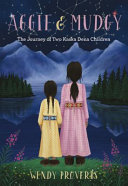
AGGIE & MUDGY - THE JOURNEY OF 2 KASKA D
By: wendy proverbs | Published: November 2021
Based on the true story of the author's biological mother and aunt, this middle-grade novel traces the long and frightening journey of two Kaska Dena... [Read More]
Based on the true story of the author's biological mother and aunt, this middle-grade novel traces the long and frightening journey of two Kaska Dena sisters as they are taken from their home to attend residential school. When Maddy discovers an old photograph of two little girls in her grandmother's belongings, she wants to know who they are. Nan reluctantly agrees to tell her the story, though she is unsure if Maddy is ready to hear it. The girls in the photo, Aggie and Mudgy, are two Kaska Dena sisters who lived many years ago in a remote village on the BC-Yukon border. Like countless Indigenous children, they were taken from their families at a young age to attend residential school, where they endured years of isolation and abuse. As Nan tells the story, Maddy asks many questions about Aggie and Mudgy's 1,600-kilometre journey by riverboat, mail truck, paddlewheeler, steamship, and train, from their home to Lejac Residential School in central BC. Nan patiently explains historical facts and geographical places of the story, helping Maddy understand Aggie and Mudgy's transitional world. Unlike many books on this subject, this story focuses on the journey toresidential school rather than the experience of attending the school itself. It offers a glimpse into the act of being physically uprooted and transported far away from loved ones. Aggie and Mudgy captures the breakdown of family by the forces of colonialism, but also celebrates the survival and perseverance of the descendants of residential school survivors to reestablish the bonds of family.
Theme: Indigenous, Based on True Events, Residential Schools
- ISBN
9781772033755 - Binding
Paperback Canadian - Category
Junior Fiction

ALL THE QUIET PLACES
By: brian isaac | Published: October 2021
Brian Isaac's powerful debut novel All the Quiet Places is the coming-of-age story of Eddie Toma, an Indigenous (Syilx) boy, told through the young... [Read More]
Brian Isaac's powerful debut novel All the Quiet Places is the coming-of-age story of Eddie Toma, an Indigenous (Syilx) boy, told through the young narrator's wide-eyed observations of the world around him. It's 1956, and six-year-old Eddie Toma lives with his mother, Grace, and his little brother, Lewis, near the Salmon River on the far edge of the Okanagan Indian Reserve in the British Columbia Southern Interior. Grace, her friend Isabel, Isabel's husband Ray, and his nephew Gregory cross the border to work as summer farm labourers in Washington state. There Eddie is free to spend long days with Gregory exploring the farm: climbing a hill to watch the sunset and listening to the wind in the grass. The boys learn from Ray's funny and dark stories. But when tragedy strikes, Eddie returns home grief-stricken, confused, and lonely. Eddie's life is governed by the decisions of the adults around him. Grace is determined to have him learn the ways of the white world by sending him to school in the small community of Falkland. On Eddie's first day of school, as he crosses the reserve boundary at the Salmon River bridge, he leaves behind his world. Grace challenges the Indian Agent and writes futile letters to Ottawa to protest the sparse resources in their community. His father returns to the family after years away only to bring chaos and instability. Isabel and Ray join them in an overcrowded house. Only in his grandmother's company does he find solace and true companionship. In his teens, Eddie's future seems more secure--he finds a job, and his long-time crush on his white neighbour Eva is finally reciprocated. But every time things look up, circumstances beyond his control crash down around him. The cumulative effects of guilt, grief, and despair threaten everything Eddie has ever known or loved. All the Quiet Places is the story of what can happen when every adult in a person's life has been affected by colonialism; it tells of the acute separation from culture that can occur even at home in a loved familiar landscape. Its narrative power relies on the unguarded, unsentimental witness provided by Eddie.
Theme: Coming of Age, Gr. 7-12, Indigenous, Residential Schools
- ISBN
9781990071027 - Binding
Paperback Canadian - Category
Young Adult Fiction
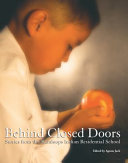
BEHIND CLOSED DOORS - STORIES FROM THE KAMLOOPS INDIAN RESERVATION SCHOOL
By: agness jack | Published: April 2024
Behind Closed Doors features written testimonials from thirty-two individuals who attended the Kamloops Indian Residential School. The school was one... [Read More]
Behind Closed Doors features written testimonials from thirty-two individuals who attended the Kamloops Indian Residential School. The school was one of many infamous residential schools that operated from 1893 to 1979. These storytellers give voice to the thousands as they remember and share with us their stolen time at the school; many stories are told through courageous tears.
Theme: Indigenous, Residential Schools, Truth & Reconciliation
- ISBN
9781926886770 - Binding
Paperback Canadian - Category
Indigenous
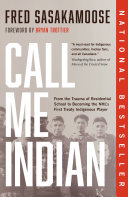
CALL ME INDIAN
By: fred sasakamoose | Published: September 2022
NATIONAL BESTSELLER "Fred Sasakamoose played in the NHL before First Nations people had the right to vote in Canada. This page turner will have you... [Read More]
NATIONAL BESTSELLER "Fred Sasakamoose played in the NHL before First Nations people had the right to vote in Canada. This page turner will have you cheering for 'Fast Freddy' as he faces off against huge challenges both on and off the ice--a great gift to every proud hockey fan, Canadian, and Indigenous person." --Wab Kinew, Leader of the Manitoba NDP and author of The Reason You Walk Trailblazer. Residential school Survivor. First Treaty Indigenous player in the NHL. All of these descriptions are true--but none of them tell the whole story. Fred Sasakamoose, torn from his home at the age of seven, endured the horrors of residential school for a decade before becoming one of 120 players in the most elite hockey league in the world. He has been heralded as the first Indigenous player with Treaty status in the NHL, making his official debut as a 1954 Chicago Black Hawks player on Hockey Night in Canada and teaching Foster Hewitt how to pronounce his name. Sasakamoose played against such legends as Gordie Howe, Jean Beliveau, and Maurice Richard. After twelve games, he returned home. When people tell Sasakamoose's story, this is usually where they end it. They say he left the NHL to return to the family and culture that the Canadian government had ripped away from him. That returning to his family and home was more important to him than an NHL career. But there was much more to his decision than that. Understanding Sasakamoose's choice means acknowledging the dislocation and treatment of generations of Indigenous peoples. It means considering how a man who spent his childhood as a ward of the government would hear those supposedly golden words: "You are Black Hawks property." Sasakamoose's story was far from over once his NHL days concluded. He continued to play for another decade in leagues around Western Canada. He became a band councillor, served as Chief, and established athletic programs for kids. He paved a way for youth to find solace and meaning in sports for generations to come. Yet, threaded through these impressive accomplishments were periods of heartbreak and unimaginable tragedy--as well moments of passion and great joy. This isn't just a hockey story; Sasakamoose's groundbreaking memoir sheds piercing light on Canadian history and Indigenous politics, and follows this extraordinary man's journey to reclaim pride in an identity and a heritage that had previously been used against him.
Theme: Indigenous, Residential Schools, Sports - Hockey
- ISBN
9780735240032 - Binding
Paperback Canadian - Category
Biography
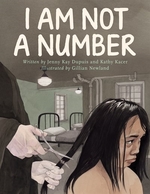
I AM NOT A NUMBER
By: jenny dupuis | Published: September 2016
When eight-year-old Irene is removed from her First Nations family to live in a residential school she is confused, frightened, and terribly... [Read More]
When eight-year-old Irene is removed from her First Nations family to live in a residential school she is confused, frightened, and terribly homesick. She tries to remember who she is and where she came from, despite the efforts of the nuns who are in charge at the school and who tell her that she is not to use her own name but instead use the number they have assigned to her. When she goes home for summer holidays, Irene's parents decide never to send her and her brothers away again. But where will they hide? And what will happen when her parents disobey the law?
Theme: Indigenous, Truth & Reconciliation, Residential Schools
- ISBN
9781927583944 - Binding
Hardcover Canadian - Category
Picture Book

I PLACE YOU INTO THE FIRE
By: rebecca thomas | Published: October 2020
In Mi'kmaw, three similarly shaped words have drastically different meanings: kesalul means "I love you"; kesa'lul means "I hurt you"; and ke'sa'lul... [Read More]
In Mi'kmaw, three similarly shaped words have drastically different meanings: kesalul means "I love you"; kesa'lul means "I hurt you"; and ke'sa'lul means "I put you into the fire." Spoken word artist Rebecca Thomas' first poetry collection is at once a meditation on navigating life and love as a second-generation Residential School survivor, a lesson in unlearning, and a rallying cry for Indigenous justice, empathy, and equality.
Theme: Indigenous, Truth & Reconciliation, Residential Schools
- ISBN
9781771088855 - Binding
Paperback Canadian - Category
Poetry
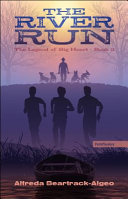
LEGEND OF BIG HEART 03 RIVER RUN
By: alfr beartrack-algeo | Published: January 2024
Lakota teen Alfred Swallow, along with two of his best friends, are sent to a residential boarding school that has the policy, destroy the Indian,... [Read More]
Lakota teen Alfred Swallow, along with two of his best friends, are sent to a residential boarding school that has the policy, destroy the Indian, save the man. After enduring harsh treatment and punishment, the boys decide to escape and make a run to the river.
Theme: Indigenous, Residential Schools
- ISBN
9781570674136 - Binding
Paperback - Category
Intermediate Fiction
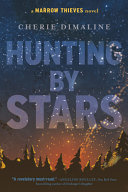
MARROW THIEVES 02 HUNTING BY STARS
By: cherie dimaline | Published: October 2021
The thrilling follow-up to the bestselling, award-winning novel The Marrow Thieves, about a dystopian world where the Indigenous people of North... [Read More]
The thrilling follow-up to the bestselling, award-winning novel The Marrow Thieves, about a dystopian world where the Indigenous people of North America are being hunted for their bone marrow and ability to dream. Years ago, when plagues and natural disasters killed millions of people, much of the world stopped dreaming. Without dreams, people are haunted, sick, mad, unable to rebuild. The government soon finds that the Indigenous people of North America have retained their dreams, an ability rumored to be housed in the very marrow of their bones. Soon, residential schools pop up--or are re-opened--across the land to bring in the dreamers and harvest their dreams. Seventeen-year-old French lost his family to these schools and has spent the years since heading north with his new found family: a group of other dreamers, who, like him, are trying to build and thrive as a community. But then French wakes up in a pitch-black room, locked in and alone for the first time in years, and he knows immediately where he is--and what it will take to escape. Meanwhile, out in the world, his found family searches for him and dodges new dangers--school Recruiters, a blood cult, even the land itself. When their paths finally collide, French must decide how far he is willing to go--and how many loved ones is he willing to betray--in order to survive. This engrossing, action-packed, deftly-drawn novel expands on the world of Cherie Dimaline's award-winning The Marrow Thieves, and it will haunt readers long after they've turned the final page.
Theme: Indigenous, Dystopian, Residential Schools, Prejudice & Racism, BIPOC
- ISBN
9780735269651 - Binding
Paperback Canadian - Category
Young Adult Fiction
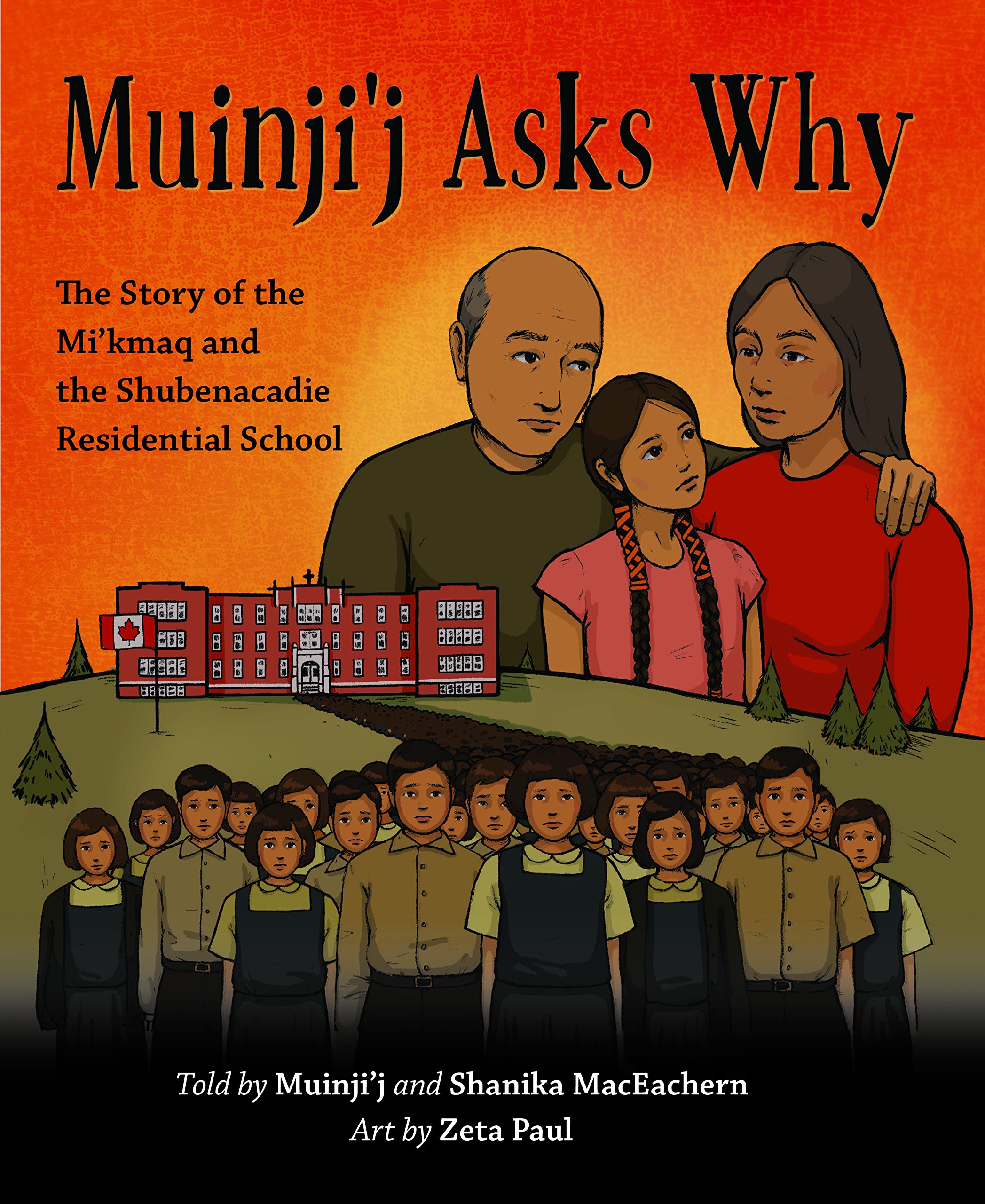
MUINJI'J ASKS WHY
By: m maceachern | Published: January 2022
When seven-year-old Muinji'j comes home from school one day, her Nana and Papa can tell right away that she's upset. Her teacher has been speaking... [Read More]
When seven-year-old Muinji'j comes home from school one day, her Nana and Papa can tell right away that she's upset. Her teacher has been speaking about the residential schools. Unlike most of her fellow students, Muinji'j has always known about the residential schools. But what she doesn't understand is why the schools existed and why children would have died there. Nana and Papa take Muinji'j aside and tell her the whole story, from the beginning. They help her understand all of the decisions that were made for the Mi'kmaq, not with the Mi'kmaq, and how those decisions hurt her people. They tell her the story of her people before their traditional ways were made illegal, before they were separated and sent to reservations, before their words, their beliefs, and eventually, their children, were taken from them. A poignant, honest, and necessary book featuring brilliant artwork from Mi'kmaw artist Zeta Paul and words inspired by Muinji'j MacEachern's true story, Muinji'j Asks Why will inspire conversation, understanding, and allyship for readers of all ages.
Theme: Residential Schools
- ISBN
9781774710470 - Binding
Hardcover Canadian - Category
Indigenous
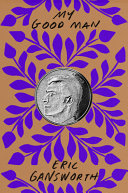
MY GOOD MAN
By: eric gansworth | Published: November 2022
Brian, a 20-something reporter on the Niagara Cascade's City Desk, is navigating life as the only Indigenous writer in the newsroom, being lumped... [Read More]
Brian, a 20-something reporter on the Niagara Cascade's City Desk, is navigating life as the only Indigenous writer in the newsroom, being lumped into reporting on stereotypical stories that homogenize his community, the nearby Tuscarora reservation. But when a mysterious roadside assault lands Tim, the brother of Brian's mother's late boyfriend in the hospital, Brian must pick up the threads of a life that he's abandoned.
Theme: Indigenous, Residential Schools
- ISBN
9781646141838 - Binding
Hardcover - Category
Young Adult Fiction
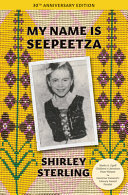
MY NAME IS SEEPEETZA
By: shirley sterling | Published: September 2022
An honest look at life in an Indian residential school in the 1950s, and how one indomitable young spirit survived it -- 30th anniversary... [Read More]
An honest look at life in an Indian residential school in the 1950s, and how one indomitable young spirit survived it -- 30th anniversary edition. Seepeetza loves living on Joyaska Ranch with her family. But when she is six years old, she is driven to the town of Kalamak, in the interior of British Columbia. Seepeetza will spend the next several years of her life at an Indian residential school. The nuns call her Martha and cut her hair. Worst of all, she is forbidden to "talk Indian," even with her sisters and cousins. Still, Seepeetza looks for bright spots -- the cookie she receives at Halloween, the dance practices. Most of all, there are her memories of holidays back at the ranch -- camping trips, horseback riding, picking berries and cleaning fish with her mother, aunt and grandmother. Always, thoughts of home make school life bearable.
Theme: Indigenous, #OwnVoices, Residential Schools
- ISBN
9781773068565 - Binding
Paperback Canadian - Category
Junior Fiction
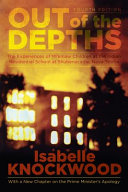
OUT OF THE DEPTHS - THE EXPERIENCES OF M
By: isabelle knockwood | Published: April 2015
Powerful, first person accounts of the atrocities of the residential school system in Canada.
Theme: Residential Schools
- ISBN
9781552667293 - Binding
Paperback Canadian - Category
Indigenous
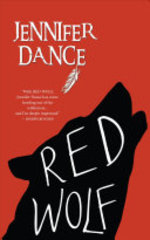
RED WOLF
By: jennifer dance | Published: February 2014
This novel tells the story of Red Wolf, a young First Nations boy forced to move into a residential school and assume a new identity. Paralleling his... [Read More]
This novel tells the story of Red Wolf, a young First Nations boy forced to move into a residential school and assume a new identity. Paralleling his story is that of Crooked Ear, an orphaned wolf pup he has befriended. Both must learn to survive in the white man's world.
Theme: Indigenous, Residential Schools
- ISBN
9781459708105 - Binding
Paperback Canadian - Category
Intermediate Fiction
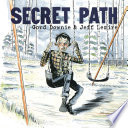
SECRET PATH
By: gordon downie | Published: October 2016
Gord Downie creates a concept album that tells the true story of Chanie Wenjack, an Indigenous boy who died in 1996, trying to escape one of Canada's... [Read More]
Gord Downie creates a concept album that tells the true story of Chanie Wenjack, an Indigenous boy who died in 1996, trying to escape one of Canada's residential schools.
Theme: Indigenous, Truth & Reconciliation, Residential Schools
- ISBN
9781501155949 - Binding
Paperback Canadian - Category
Graphic Novel Children's

SECRET POCKET
By: peggy janicki | Published: April 2023
The true story of how Indigenous girls at a residential school sewed secret pockets into their dresses to hide food and survive. Mary was four... [Read More]
The true story of how Indigenous girls at a residential school sewed secret pockets into their dresses to hide food and survive. Mary was four years old when she was first taken away to the Lejac Indian Residential School. It was far away from her home and family. Always hungry and cold, there was little comfort for young Mary. Speaking Dakelh was forbidden and the nuns and priest were always watching, ready to punish. Mary and the other girls had a genius idea: drawing on the knowledge from their mothers, aunts and grandmothers who were all master sewers, the girls would sew hidden pockets in their clothes to hide food. They secretly gathered materials and sewed at nighttime, then used their pockets to hide apples, carrots and pieces of bread to share with the younger girls. Based on the author's mother's experience at residential school, The Secret Pocket is a story of survival and resilience in the face of genocide and cruelty.
Theme: Indigenous, Prejudice & Racism, Residential Schools
- ISBN
9781459833722 - Binding
Hardcover Canadian - Category
Picture Book
